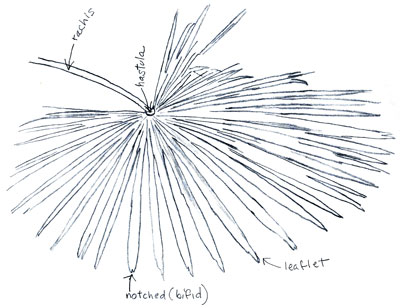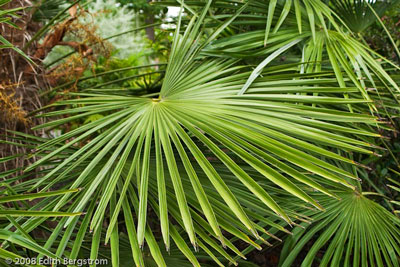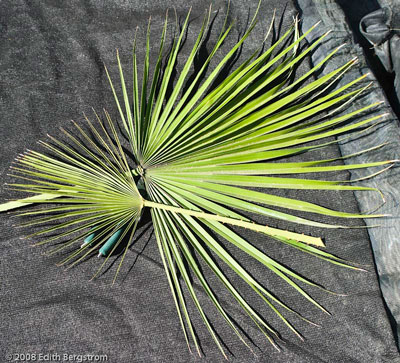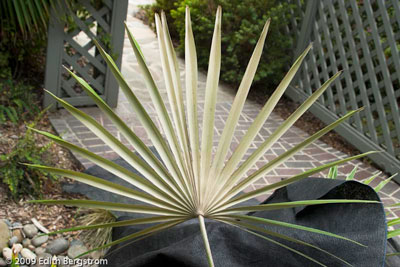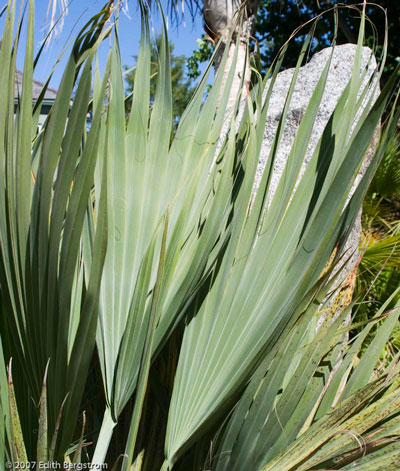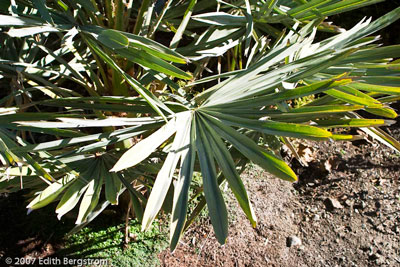Palmate Type 3: "Spatula"
The rachis stops at the edge of the fan
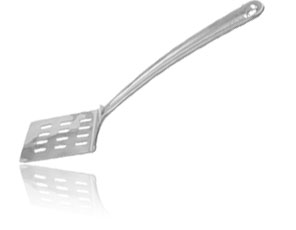
Here the rachis does not continue into the leaf, but stops at the edge of the fan forming a hastula to grasp the leaflets - like a handle molded on a spatula. This attachment usually, but not always, generates a fairly flat leaf. The leaves in this group are sometimes almost circular. Identifying details corresponding to individual species will later be pointed out by text accompanying the pictures. These are found in the albums listed alphabetically. You will be able to compare a particular detail across the species of a genus using the search engine. For example, typing "Trachycarpus leaf top" will bring up all the leaf tops of that genus. Also notice the variations in the way the leaf tips are constructed in different species. Other helpful comparisons can be found by checking Trunks, Ligule, Thorns and Hastulas.
Trachycarpus leaves vary from stiff to quite relaxed at the leaf ends. Some are chalky white on the back side of the leaf. The leaves of others are unevenly split or split to almost the hastula.
Similar Genera: Chamaerops, notice deeply slit leaves and sharp thorns; Guihaia, silver-tan color to back of the leaves; Trithrinax campestris, stiff silver-green, lance-like, lethal pointed leaves; Nannorrhops richiana, at maturity trunks will branch; Rhapis genus; Trachycarpus; Copernicia, thorns, silver color; Trithrinax brasiliensis, trunk spikes
